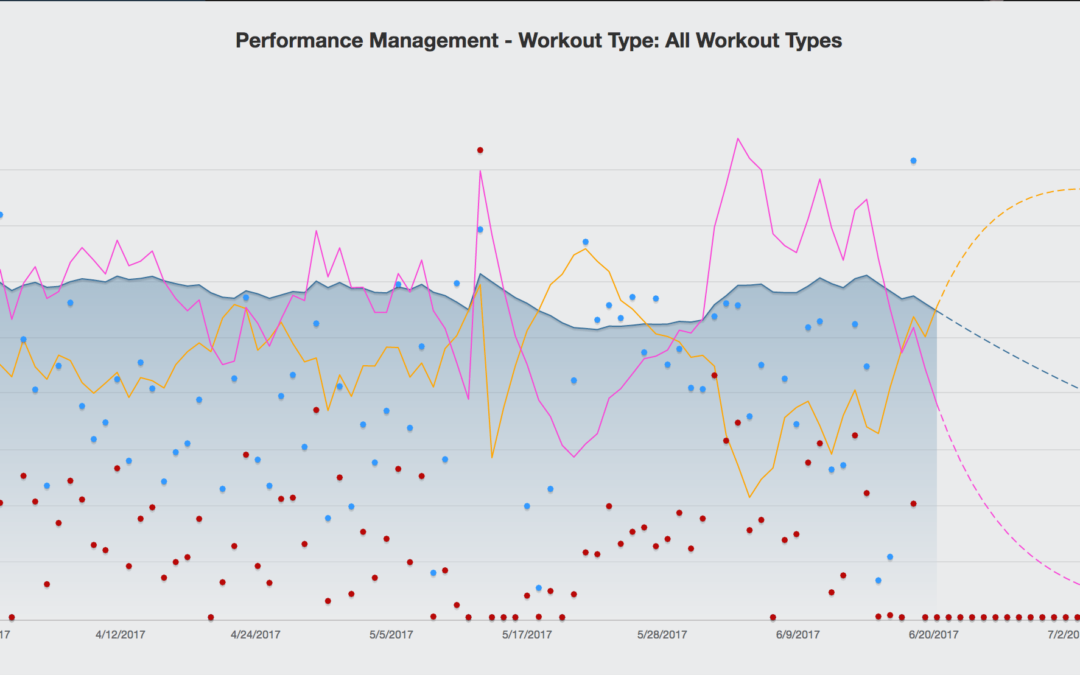Technology has radically changed how coaches work and athletes train. Heart rate monitors, GPS, power meters, gait, stroke & cadence monitors, analytical software – the list goes on. As a coach, I rely heavily on technology to guide and monitor my athletes.
But technology can be a crutch. I have seen athletes who believe that technology alone will make them a better athlete. If they can graph and pie chart and spreadsheet every piece of data it will make them faster/stronger/better. Don’t get me wrong: I am a fan of data. Used well it tells the truth we may not be able or want to see. Give me a spreadsheet any day. But sometimes athletes lose sight of the fact that technology cannot help them if the training is not there.
To me it is no different than spending hundreds of dollars on an aero helmet in hopes of having a fast bike split without having done consistent bike training. The helmet cannot pedal for you.
My coach always stressed consistency. If you do nothing else in training, be consistent. It’s that simple. The consistent athlete will always be better prepared.
Use technology. Please. But use it as it is intended:
- Training Zones: Heart rate, power and pace can all be used to establish training zones. Training zones help the coach and athlete structure training appropriately. They can help keep an overzealous athlete in check or push an athlete who is not used to higher intensity. As a coach, this is how I establish whether my athletes are doing what I ask of them. At the same time, I think it is invaluable to be able to intuitively feel different efforts: as an athlete, use your technology but commit to focus on how different efforts feel.
- Race Pacing: It is oh so easy to go out too hard in a race. I know. I am as guilty as anyone. Pumped with nerves and adrenaline, it feels so easy for that first mile/hour/whatever. You think to yourself “So what if my heart rate is redlined, I could do this all day!” or “Wow, I didn’t know I could run a 7 minute mile, only 12 more to go!” And then the wheels come off. If you listen to your technology device (it’s that thing beeping angrily at you) you can prevent this and keep your effort in check until your brain catches on. You can always pick up the pace, but it is very difficult to recover from unsustainable intensity early in the race. Remember that it is much more fun to be the one passing people at the end than the one being passed.
- Goal setting: Analyzing training data can help athletes set realistic goals. You might really want to run that half marathon at a 7 minute/mile pace, and blindly set that goal, but your training data can tell you (or your coach) if that is realistic. It can work in the other direction too: often I use training data to show an athlete what I think they are capable of in a race. It is powerful to be able to back things up with real data, to send an athlete into a race with the knowledge that they have the training to reach a specific goal.
- Training status: This one is a little trickier because it relies so heavily on many and various inputs. Crap data in = worthless data out. But if used correctly, technology can help alert you if you are creeping into that dreaded overtraining zone. There are many tools: Training Peaks uses TSS (Total stress score), various programs rely on objective data such as sleep quality, muscle soreness, mood. There is HRV (heart rate variability). My Garmin likes to tell me that my recovery check looks good, although it usually tells me this no matter whether I agree with it. None of these approaches are perfect. The most important thing to understand is that they don’t magically know your training status. They rely on all the inputs you give them. If your only input is training volume, for example, you might get an answer but it will be meaningless. To use these tools you have to ensure you consistently input as much data as you can gather.
- Video analysis: Done by a professional this can be game changing – until you see yourself doing something, it is hard to know you are doing it and nearly impossible to change it. I am a big fan of video and think everyone should be have swim/bike/run analysis done. But ONLY if you are committed to putting in the work to address any fatal flaws the analysis reveals. Change takes patience, time and full commitment – that isn’t always realistic. If you can’t fully commit to fixing your stroke/gait/bike mechanics, don’t waste your money finding out what is wrong with them.
It is hard to remember life before modern training technology. Some of you have never HAD life before this technology and to you I say, yes, there was life before. The same training principles existed then as they do now. We just couldn’t make such pretty graphs.


Recent Comments